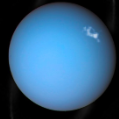About This Club
It's a club for everyone that loves Astronomy! No matter if Photography or just star gazing, everyone is welcome!
- What's new in this club
-
Ishmael joined the club
-

Mariner Documentary
Livealarm replied to Iforgotmybrain's topic in Astronomy (Beauty of the Universe)'s Astronomy
I will make sure to check it out! Thanks for the recommendation, @Iforgotmybrain- 1 reply
-
- 1
-

-
rascalrat joined the club
-
I've been watching this absolutely fantastic documentary on NASA's Mariner missions the past few days and finally finished it last night. It's an absolute masterclass documentary, about 4 hours long, goes over all the missions and goes into detail about the planets visited as well. Highly recommend checking it out. The guy's other documentaries, which are all space related, are also very good.
- 1 reply
-
- 3
-

-
Iforgotmybrain joined the club
-
Retro*Derpy joined the club
-
Felis Amafeles joined the club
-

Perseids Meteor Shower
DubWolf replied to ComanderZhabikKlavik's topic in Astronomy (Beauty of the Universe)'s Astronomy
Oooo, maybe I’ll give it a shot, but I’m also in the city … -

Perseids Meteor Shower
Livealarm replied to ComanderZhabikKlavik's topic in Astronomy (Beauty of the Universe)'s Astronomy
Hopefully I will be able to see this meteor shower, since last year I didn't. Keep your eyes on the skies! -
Information taken from this site: https://starwalk.space/en/news/all-you-need-to-know-about-the-perseids The Perseid meteor shower is active from July 17 to August 24 and reaches its maximum on August 12. Where to look for the Perseid meteor shower? In the Northern Hemisphere, the Perseid meteors can appear anywhere in the sky, but their path will be traced back to the constellation Perseus – that’s why they are called the Perseids. Within the constellation, there is a certain point where the meteors seem to come from. This point is called the radiant. The higher the radiant rises, the more meteors you see. To catch as many “shooting stars” as possible, target your observations around the time when the radiant is high in the sky. When is the Perseid meteor shower? The Perseids occur every year between mid-July and late August. In 2025, the Perseid meteor shower is active from July 17 to August 24. While a few meteors may be occasionally visible throughout this whole period, the best viewing time will be around August 12, when the shower reaches its peak and the number of meteors is highest. Best time to see the Perseid meteor shower 2025 At its peak, the Perseids produce about 100 meteors per hour and are considered to be one of the most prolific meteor streams. According to the International Meteor Organization, in 2025, the highest number of meteors is expected on August 12, at 13:15 GMT (also, on August 12, after 04:00 GMT, the Earth is predicted to encounter an old dust trail, which might enhance the number of meteors). Unfortunately, this event occurs three days after the Full Moon, so the 90%-illuminated lunar disc will be lighting up the sky all night, washing out fainter meteors. To reduce this effect, try to block out the moonlight by staying in the shadow of a tall building, a tree, or a mountain. If possible, plan your observations for the predawn hours, as the sky may be darker. You can also try observing after the peak night when the meteor shower will still be active, but the moonlight won’t be so intense What causes the Perseid meteor shower? Meteor showers occur when the Earth passes through a trail of debris left by a comet or asteroid (in some special cases). Each meteor shower has a parent body; for the Perseids, it is the large periodic comet 109P/Swift-Tuttle. Although it approaches our planet only once every 133 years, we observe the Perseids annually because the Earth crosses the comet’s trail every year. I think I wrote a topic about the Perseids last year, but I didn't find it, maybe I didn't write about it. Unfortunately, I am not in the village and will not be able to observe the peak of the meteor shower. I once saw the peak of this meteor shower (it was the first time in my life that I saw a meteor shower) and it was amazing because I saw a bolide! It's a big meteor.







